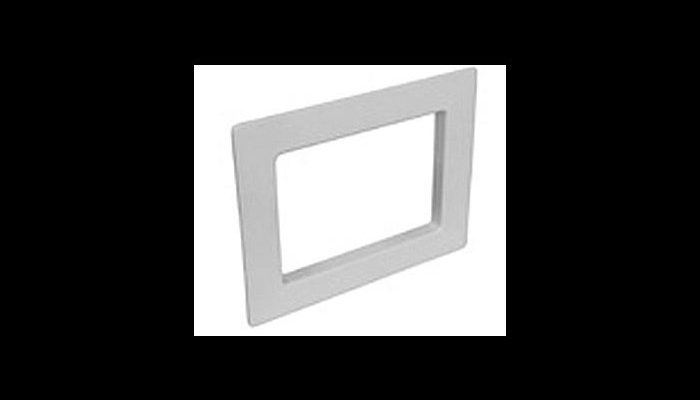
It’s a common sight, especially if you live somewhere damp or near the ocean. Brands like Kwikset, Yale, and Schlage make sturdy entry sets, but even the best can end up with tarnish and gunk if the finish wears down or moisture sneaks in. Here’s the thing: you don’t need to be a locksmith or hardware expert to fix this. With a little time, the right tools, and some patience, you can restore your handleset faceplate to its former glory. Let me walk you through it—step by step, like we’re tackling a weekend project together.
Why Handleset Faceplates Oxidize or Corrode
First, let’s talk about what’s actually happening to your handleset faceplate. Most faceplates are made of brass, bronze, or steel with a protective coating—think of it like sunscreen for your hardware. Over time, though, exposure to rain, humidity, and the oils from your hands can wear that coating down. Once the protection is gone, oxygen and moisture in the air start to react with the metal beneath.
You might be wondering, “Is this just rust?” Not always. If your handleset’s faceplate is brass or bronze (like many Baldwin or Schlage models), you’ll likely see greenish spots called “patina.” Steel or cheaper alloys can develop flaky, reddish rust. Aluminum develops a dull, whitish film. Each metal has its own unique way of breaking down—but the result is the same: your door hardware looks tired and worn out.
Honestly, it’s not just about looks, either. If you leave the problem alone, corrosion can eat away at the metal, causing pits or holes. Over time, that makes your handleset weaker and more likely to break or jam. Think of it as leaving a pothole in your driveway—ignore it for too long, and you’ll end up with a much bigger repair job down the line.
How to Tell If Your Faceplate Is Oxidized or Corroded
Before you grab the cleaning supplies, you’ll want to figure out exactly what you’re dealing with. Start by giving your handleset a close look under good lighting. Is it just a little dirty, or are there actual discolorations, bubbles, or rough spots?
Common signs of oxidation or corrosion include:
- Dull, chalky, or faded appearance that doesn’t wipe away with a damp cloth.
- Green, blue-green, or white patches (especially on brass/bronze faceplates).
- Reddish or brown flakes (a classic sign of rust on steel handles or faceplates).
- Areas that feel gritty, bumpy, or soft to the touch—sometimes even a little “crumbly.”
If you have a Kwikset or Yale handleset faceplate, check their finish warranty before grabbing your toolbox. Some finishes are covered for years, so you might be able to get a replacement if the corrosion is severe. For everyone else, take a mental note of the worst spots—those are the areas you’ll want to focus on during repair.
What You’ll Need: Tools and Supplies
Let me break down exactly what to gather before you start fixing your corroded handleset faceplate. The good news? Most of these are things you probably have around the house or can pick up at any hardware store without spending a fortune.
You’ll need:
- Rubber gloves (to protect your hands from cleaners and metal shavings)
- Soft cloths or microfiber towels
- Fine steel wool (
- Baking soda (for a DIY cleaning paste)
- Vinegar or lemon juice
- Water and mild dish soap
- Masking tape (to protect surrounding door areas)
- Metal polish or brass cleaner (like Brasso or Bar Keepers Friend, depending on your metal type)
- Touch-up clear coat spray (for extra protection)
If your faceplate is especially bad, you might also want a small screwdriver to remove it from the door. That makes it much easier to get into all the nooks without messing up the wood or paint around it. It’s not always necessary, but if you’re going for a really thorough job, it’s worth the extra five minutes.
Preparing the Area for Safe, Effective Cleaning
Here’s the thing: cleaning and repairing a handleset faceplate isn’t just about scrubbing away the problem. You want to avoid accidentally scratching your door, damaging the lock, or getting polish on the paint. That’s why smart prep makes the whole project way easier.
Start by putting on your gloves, since you’ll be handling both chemicals and rough metal. If you’re planning to remove the faceplate, use your small screwdriver and keep the screws in a bowl so you don’t lose them. If you’re cleaning with the faceplate still attached, use masking tape to cover the area around the hardware. This protects your door’s finish while you work.
Take an extra minute to lay down an old towel under your workspace. It’ll catch any drips, polish, or debris—saving you a headache later.
Use a soft, damp cloth to wipe away any loose dirt or dust. This step might sound basic, but trust me, it’s important. If you start scrubbing corrosion before removing surface grime, you’ll end up grinding dirt into the metal and making scratches. Once the handleset faceplate is clean and dry, you’re ready for the main event.
Removing Oxidation and Corrosion: Step-by-Step
You might be wondering, “Can I just use whatever cleaner’s under the sink?” Not quite. The goal is to lift off oxidation and corrosion without scratching or damaging the faceplate further. Here’s the method I recommend—safe for most Schlage, Kwikset, Yale, and similar faceplates.
Step 1: Make a gentle cleaning paste.
- Mix baking soda with enough water to make a thick, spreadable paste.
- If the corrosion is stubborn, add a splash of vinegar or lemon juice.
Step 2: Apply and let sit.
- Smear the paste over any tarnished or corroded areas.
- Let it sit for 10–20 minutes. This helps break down surface oxidation.
Step 3: Gently scrub.
- Use fine steel wool or a soft-bristle brush. Rub in small, circular motions with light pressure.
- Don’t attack it like you’re sanding a floor—a gentle hand is key to avoid scratching.
Step 4: Rinse and check your progress.
- Wipe with a clean, damp cloth. Look for any remaining dull, bumpy, or colored patches.
- Repeat the process on any stubborn spots. It’s normal to need two or three rounds for severe corrosion.
If your handleset faceplate is brass, a little tarnish can actually protect the metal underneath (that’s what “patina” is). So don’t stress about removing every hint of color—focus on getting rid of crusty or flaky areas, which can keep breaking down the metal.
Polishing and Restoring Shine
Once you’re happy with how your handleset looks, it’s time to bring back some shine. This part is honestly pretty satisfying—like buffing an old coin until it glows. You can use a product designed for your faceplate’s metal. For Schlage or Baldwin brass, something like Brasso works wonders. For stainless or nickel, grab a dedicated cleaner or a bit of vinegar on a soft cloth.
How to polish:
- Apply a small amount of polish or cleaner to another clean, soft cloth.
- Buff in circular motions, focusing on any spots that still look dull or tired.
- Let the polish sit for a minute, then buff off with a dry cloth until you get a nice shine.
Don’t overdo it—especially with old or thinly-plated faceplates. Too much scrubbing can take off the finish completely, leaving you with a patchy look. Less is more!
If you’re working on a Yale or Kwikset handleset, check the care guide for your specific model. Some “living finish” or antiqued designs are meant to develop a bit of character, and heavy polishing might remove that intentional aging.
Protecting the Faceplate: How to Prevent Future Oxidation
You fixed your handleset faceplate, so let’s keep it looking good. The secret? A protective barrier between the metal and the outside world. After you’ve cleaned and polished the faceplate, you can spray on a touch-up clear coat—just make sure it’s specifically made for metal. This seals the finish and gives you months of extra defense, especially in wet or seaside climates.
Other tips to extend your repair:
- Wipe down your handleset faceplate with a soft, dry cloth every week or two.
- Avoid using harsh cleaners or bleach on the faceplate—these can break down finishes fast.
- If your faceplate faces rain or direct sun, try adding a small awning or door shield to reduce exposure.
With a little bit of routine attention, you’ll slow down oxidation and keep your front door hardware looking sharp and welcoming.
When to Replace Instead of Repair
Sometimes, no amount of cleaning or polishing will bring your handleset faceplate back from the brink. If it’s deeply pitted, has holes, or parts are literally flaking away, you’re better off swapping it for a new one. Here’s why: corrosion eats away at the structural strength of the metal. If the faceplate gets too thin, it can compromise your lock’s security—and nobody wants that.
Think about the age of your current handleset, too. If it’s 15 or 20 years old and you’ve already fixed it a few times, upgrading might save you headaches (and repair bills) down the road. You can find universal fit faceplates for many brands, or you could reach out to companies like Schlage or Kwikset for an exact match.
Replacing a faceplate is usually a simple “unscrew and swap” job. Just make sure the new part matches your old one’s size and screw hole placement, so your lock works smoothly.
Final Thoughts: Restore, Protect, and Prevent
Restoring a corroded handleset faceplate is really about giving your front door a second chance. It’s proof that a little steady effort—and the right know-how—can bring even tired hardware back to life. You’ve learned how to spot oxidation, clean it up, polish it, and even protect it from coming back.
Sure, your handleset is a small part of your entryway, but it’s one of the first things you and your guests touch every day. A clean, shiny faceplate is like a handshake from your house—welcoming, solid, and definitely worth keeping in good shape. So, the next time you spot a dull or corroded patch, you’ll know exactly what to do. Happy repairing!
